Herb infused oils and vinegars are a great way to preserve summer’s mouthwatering flavors for fall and winter.
This post contains affiliate links. If you click through a link I may get a small commision at no expense to you. Read my disclosure policy here.
Rosemary Infused Olive Oil
I’ve been making herb infused oils for decades. These oils can be used for cooking or for medicinal use, depending on what herbs you use. Today we’ll be focusing on their use for cooking and preserving herbal flavors.
Rosemary is my absolute favorite herbal scent and flavor. You can use Rosemary oil to make a wonderful vinaigrette, and it elevates the flavors in pasta dishes, potatoes, pesto and hummus. Pesto recipe using Rosemary Oil can be found here.
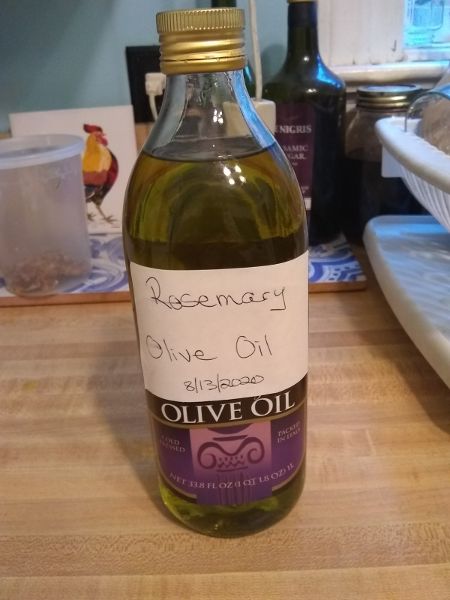
The best news is, rosemary oil is easy to make! Always start with fresh rosemary. You can buy it at the grocery store, but I prefer to grow my own. Rosemary is a tender perennial which means that in areas with hard winters, you need to protect the plant. I bring mine into our “breezeway.” Though the temperature can drop down to freezing there, the rosemary plant has been very happy.
How to Make Rosemary Infused Olive Oil
You’ll need to cut several sprigs of rosemary for your oil. Of course, the amount will depend on the amount of oil you’re preparing. I used an entire bottle of EVOO from Trader Joe’s so I ended up cutting a bit more rosemary than you see in the picture below.
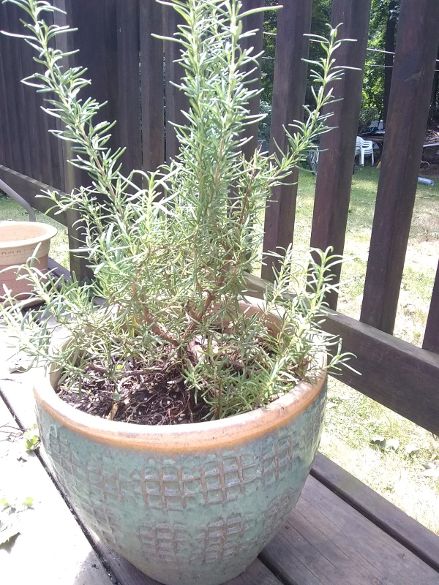
Rosemary Plant 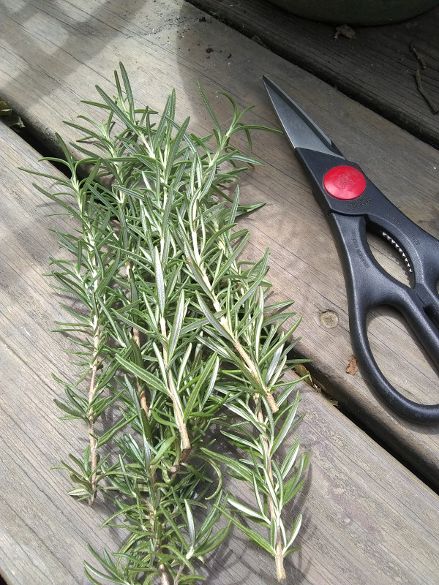
Cut rosemary 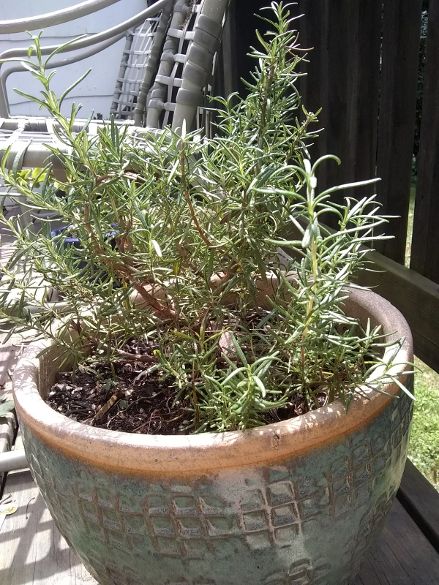
Rosemary plant after cutting
Rinse your rosemary and remove and leaves that don’t look good. Be sure to let it dry thoroughly since we know that oil and water don’t mix!
A double boiler allows you to maintain even heat without worries of burning your oil. Once the water in the bottom of the double boiler comes to a boil, you can safely infuse the oil over a warm or low heat. I check the water periodically to make sure it’s still boiling and that it’s not getting too low. If you don’t have a double boiler, you can infuse the oil in a ball jar placed in a pan of boiling water.
Place the rosemary in the top of the double boiler, pour in your oil to cover the rosemary and put the lid on. I set a timer for 2 hours. After 2 hours, I turn off the burner and let it sit until it has cooled.
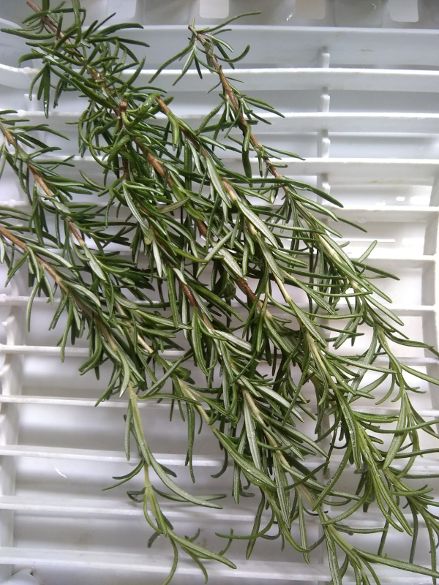
Allow rinsed rosemary to dry thoroughly 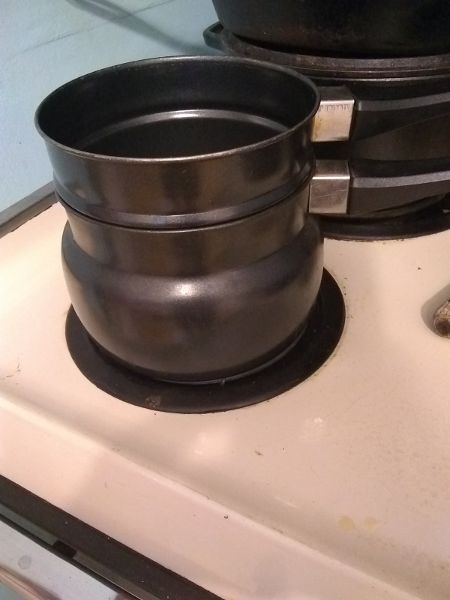
I prefer to use a double boiler 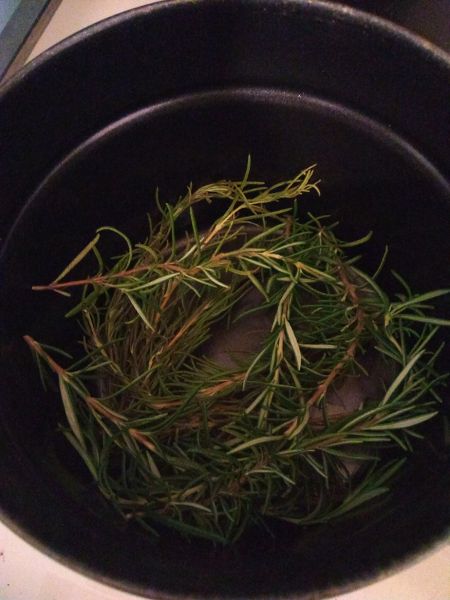
Rosemary in the double boiler
Straining Rosemary Olive Oil
The next step is straining the rosemary out of the oil. I set up a large measuring cup (4 cups) with a strainer lined with a coffee filter, preferably unbleached. Before pouring any oil, make sure to wipe down the bottom of the pot which can be very wet from condensation from the boiling water.
This set up is not big enought to strain all the oil at once. When the strained oil approaches the bottom of the strainer, it’s time to pour off the strained oil. Place the strainer on top of the double boiler so no oil is lost or makes a mess of your counter top. Then pour the finished oil into your chosen container.
Since I used the entire bottle of olive oil, I simple put the finished oil back into the same bottle. This saves me a big step of having to wash the bottle out, sterilize it and wait days for it to fully dry! Glass bottles are important since they don’t leach into the oil like plastic can.
Continue straining the oil in batches until it has all been strained. You’ll be left with a mass of oily rosemary leaves. Sadly, the oil on them means this shouldn’t go into compost, so I put it with the materials we light in our fire pit! It burns well and smells great. DIY Firepit post here!
Store your rosemary olive oil on the counter, out of direct sunlight, if you are using it regularly, and especially if the glass bottle is colored. If you’ll only use your oil occasionally, consider keeping it in the refrigerator to avoid it spoiling or going rancid. I’ve been able to keep the oil on the counter close to a year, and in the fridge, almost indefinitely. Be aware that olive oil will solidify in the refrigerator, so you’ll need to bring it to room temperature again to use it.
Don’t forget to label and date your finished product!
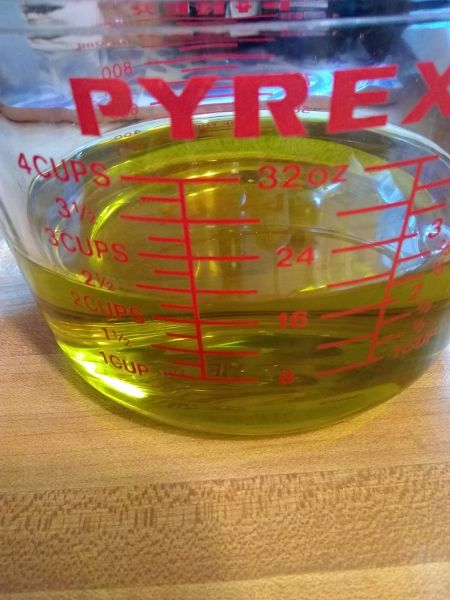

Rosemary Oil
You can use this same method for thyme oil. Oregano, sage, chives, basil, parsely, tarragon and cilantro should be allowed to dry partially before infusing in oil to reduce the chance of spoilage, or you can use the dried herb. I would store these oils in the refrigerator.
Tarragon Infused Vinegar
Herb Infused Vinegars are even easier to make, though they will take longer.
My favorite herbal vinegar is Tarragon. Salads have a whole new layer of flavor when Tarragon vinegar is used in your dressing.
Simply cut several sprigs of tarragon from your plant, or purchase the herb at your local store or farmer’s market. Rinse and dry thoroughly, removing any leaves that don’t look appealing.
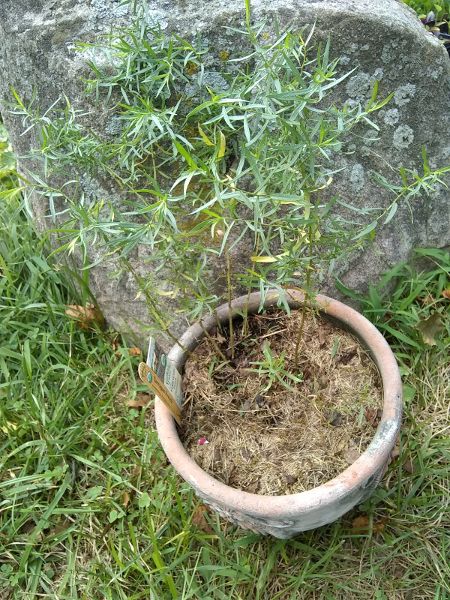
Tarragon Plant 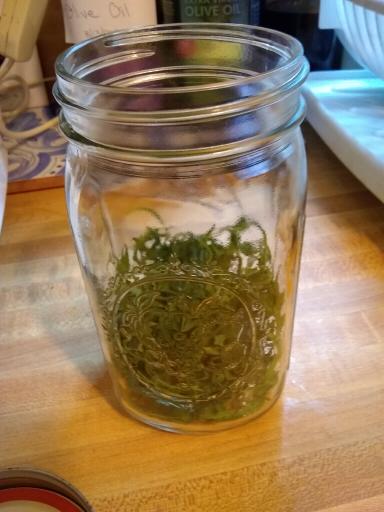
Rinsed and dried tarragon in a ball jar 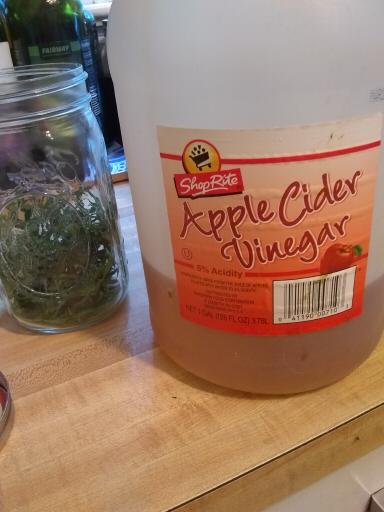
I buy the jug of apple cider vinegar!
Pack the leaves into a glass jar with a secure lid. I generally use a quart ball jar. Use a wooden spoon to smash the leaves to release the licorice scented oils. Cover with apple cider vinegar or white wine vinegar to an inch or two above the tarragon. Stir and mash leaves again then seal the lid. Leave the jar on the counter out of direct sunlight for 2 weeks, shaking the jar daily.
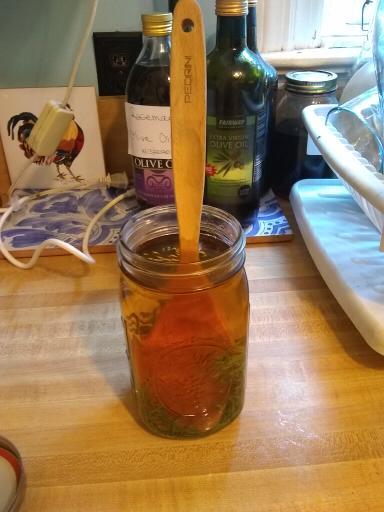
Muddle the tarragon with a wooden spoon to release the flavor and scent 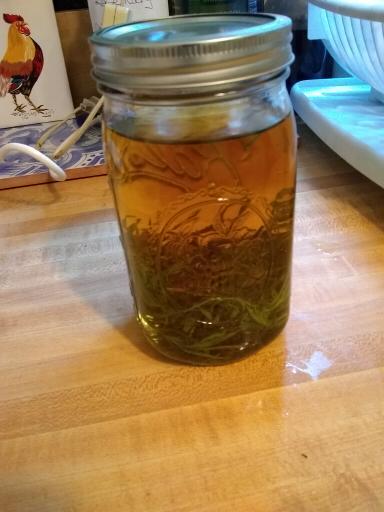
Store on the counter and shake daily
After 2 weeks, strain the vinegar using the same method described for the rosemary oil. You can compost the tarragon leaves that are strained out. Learn how to compost here!
Easy, delicious, fragrant herb infused oils and vinegars are wonderful during the salad days of summer and throughout the entire year.

What are your favorite herb infused oils and vinegars? Please share your comments and questions.
Get the latest on the gardens, DIY projects, money saving ideas and chickens by subscribing here!
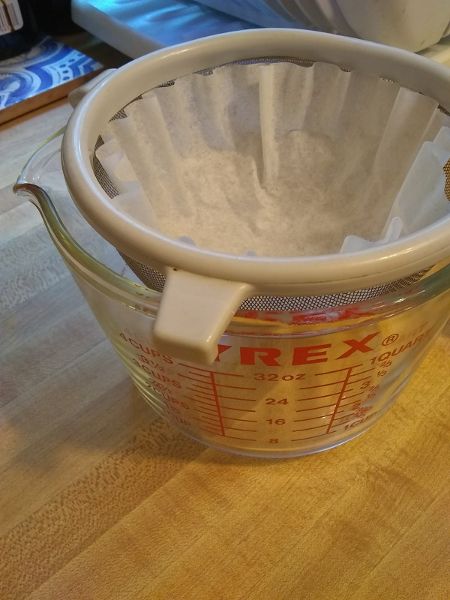
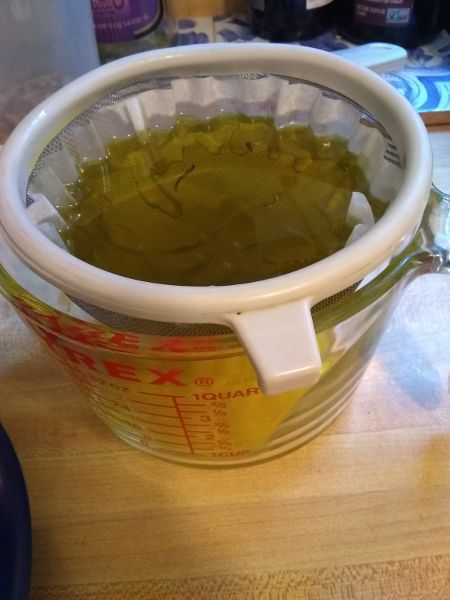
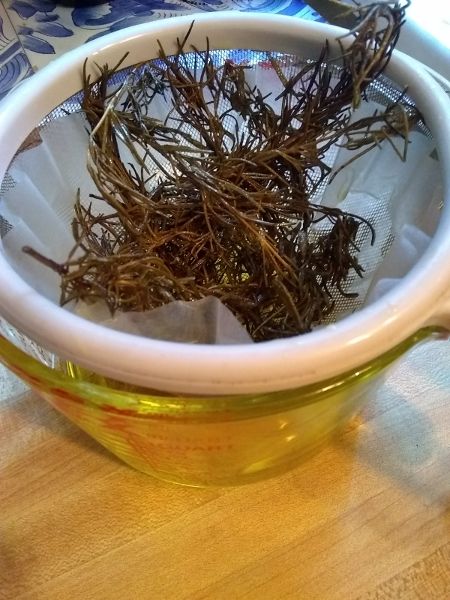
Pingback: Infinite Possibilities of Pesto | My Frugal Nature